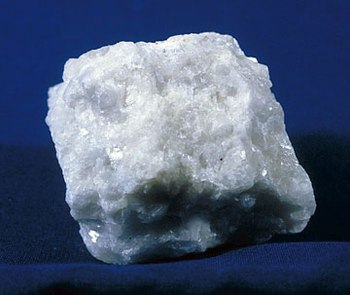Marble (stone)
 From Citizendium - Reading time: 1 min
From Citizendium - Reading time: 1 min

Marble is a hard, metamorphic rock formed from limestone or dolomite that has been subject to heat, pressure, and water over long periods of time. It is often irregularly colored by impurities, and polished marble is prized especially for use in architecture and sculpture. The distinct appearance of marble comes from the recrystalization that occurs from those external influences. Marble tends to be softer and more porous than granite with few exceptions like marble from Danby, VT (granite is an igneous rock, which means it was once molten and formed as it cooled deep within the earth). Of the thousands of varieties of natural stone, marble is one of the most varied, with many different families and appearances.
The different families of marble are usually named after the quarries in which they are found. For example, Carrara marble, comes from a quarry located in Italy. The location of the quarry also has a direct effect on its qualities, in terms of hardness, relative homogeneity, and index of refraction. Part of what gives certain types of marble a certain opaque look has to with the refraction of calcite[1], and the amount of impurities such as iron oxide, sand, or silica.
References[edit]
- ↑ What is Marble?. Graniteland. Retrieved on 2008-02-07.
 KSF
KSF